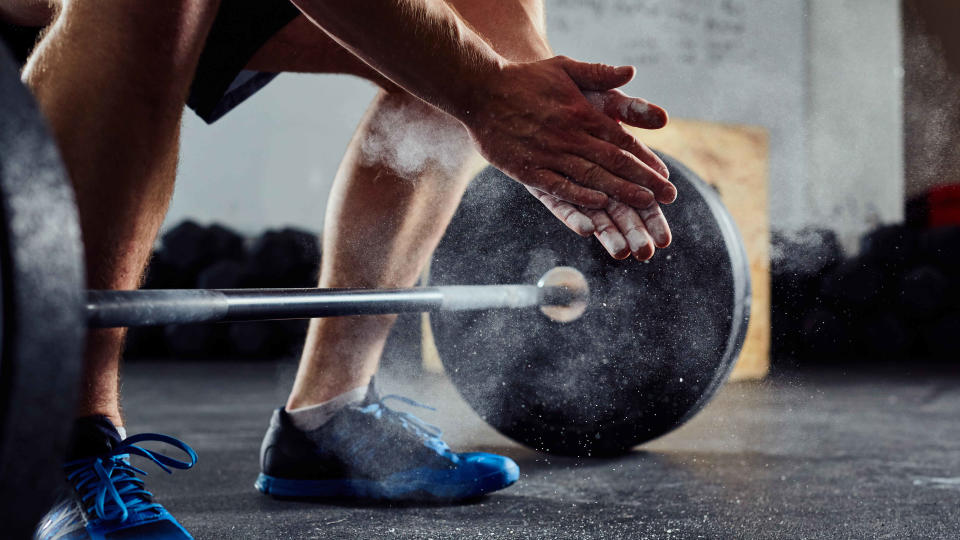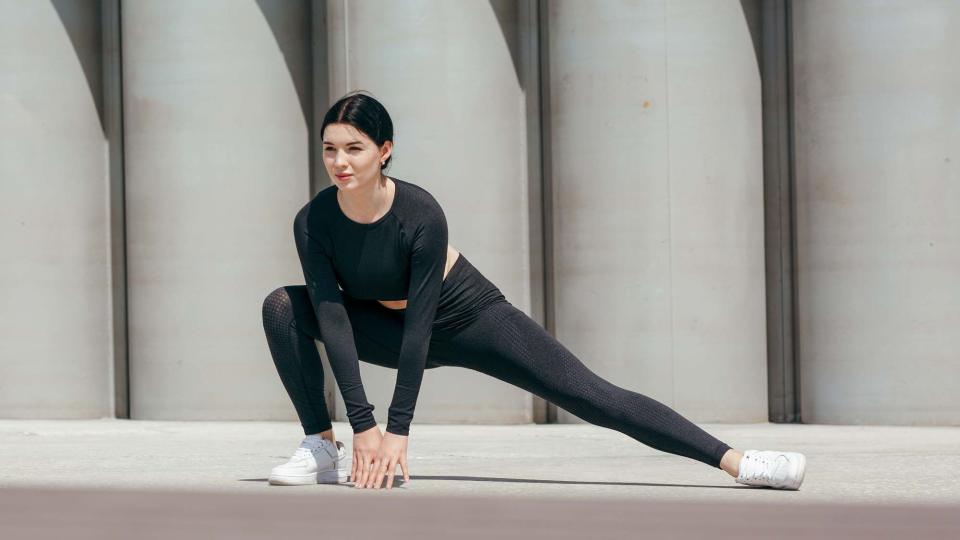How to test your one-rep max and why it matters

Calling all weightlifters — do you know your one-rep max (1RM)? If you don’t, here’s why you should and how to measure it if you haven’t already.
Your 1RM is the maximum all-out effort of producing one rep of a lift, usually reserved for the "big lifts" like a bench press, squat or deadlift. For example, if the maximum you can deadlift for one rep is 200 pounds, that’s your 1RM. That doesn’t mean compromising your form to get the rep though, which is an important distinction.
Whether you prefer strength training, hypertrophy or endurance (or you don’t know the difference), grab the best adjustable dumbbells and read on to see why calculating your 1RM matters, how to test it safely and why doing so could improve your workout results and help you build strength and muscle.
Why should you test your one-rep max?
Learning how to calculate your 1RM should keep you on track to hit your workout goals, whatever those might be. It’s common for powerlifters and strength training advocates to test a 1RM, but others might think it’s irrelevant to them, which isn’t true.
Taking time to test your 1RM will help you optimize your training plan and improve performance, giving your body the correct stimulus for reaching success. It’s also a good indication of your current strength and any progress you’ve made or are yet to make.
Unless you lift competitively, you won’t need to test this often. But even if you do it once a year or three times, you’ll need to factor in preparatory training and a recovery regime for testing, which means hitting the relevant stimulus. But how?
Hypertrophy vs strength training

First, let’s sum up the difference between building strength versus muscle, considering the 1RM is a test of all-out strength known as absolute strength. Strength training builds strength and improves the power output of your muscles, whereas hypertrophy training refers to building muscle mass.
Strength training involves lifting heavier weights above 85% of your 1RM (once calculated) for fewer reps between 2-6 and higher sets of 4-6 (as a guideline). Rest time sits at a few minutes between sets, allowing your body to recover properly from the neuromuscular impact of this training style.
If you train for hypertrophy, your reps sit between 8-12 and 3-4 sets with no more than 90 seconds of rest between sets. This method of growing muscle adopts progressive overload, meaning you’ll incrementally increase load over time to stimulate the muscles. As a result, you’ll lift a lower percentage (65-85%) of your 1RM, which is why calculating it matters. Otherwise, you could be over or undertraining your muscles.
Anyone training for muscular endurance also needs some understanding of maximum power output to lift weights light enough for sustained periods. You can find out more with our hypertrophy vs strength training guide, and we also cover high reps vs heavy weights for endurance lovers.
One-rep max exercises to try
Exercises typically include:
Squat
Weighted pull-ups
Clean
Snatch
Jerk (split and push)
Push press
These compound exercises are a starting point if you want to try several one rep max attempts.
How to test your one-rep max
The process will look different depending on previous training experience and ability, but here are some guidelines. A general rule of thumb is to test exercises you know and have practiced regularly with good form rather than attempting new lifts.
Preparation
We recommend setting a date for your test and gradually lifting closer to your maximum ability by decreasing volume (lower reps) and increasing weight as you approach it. You could start preparing several weeks beforehand to set yourself up for success and keep a close eye on your form by recruiting the help of a spotter or personal trainer or using a mirror.
Don’t attempt to test your 1RM without any preparation, as this is a one-stop shop for injury and won’t give you an accurate measurement. We don’t recommend testing several lifts on the same day, so try to spread these out to give your muscles time to recover — no more than two per week.
For most lifters, the best time of day to test is in the afternoon, but this comes down to personal preference. Most people have more energy in the afternoon, and others prefer to hit their workouts early. For those who want to work out in tune with their menstrual cycle, then here’s more on exercise cycling. Yep, ladies, you’ll feel stronger at certain times of the month.
Warm-up

As you would before any resistance program, include a mix of gentle cardio and dynamic stretching as part of a warm-up. Try to make these specific to the muscle groups you’ll target in the test using various activation exercises. For example, we love to use this bodybuilder's hip mobility exercises before we squat.
Adding a resistance band is also helpful to engaging various muscles, and save the static stretches for your recovery routine afterward.
Build: Warm-up sets
Don’t rush and build slowly. We recommend having a coach or spotter on hand to keep you safe and accountable.
Start with just the barbell and add plates over 4-6 sets until you hit a challenging load, reducing reps each time. Remember, you’re just preparing your muscles and nervous system, so try not to overdo it.
An example might be:
Set 1: 10-12 reps @ 30% of 1RM attempt
Set 2: 8-10 reps @ 40%
Set 3: 6-8 reps @ 50%
Set 4: 4-6 reps @ 60%
Set 5: 2-4 reps @ 70%
Set 6: 1-2 reps @ 80%
Once you hit a challenging 80-85%, build in smaller increments of 5% until you reach around 90-98%, then go for the single attempts.
Time your rest periods for no less than two minutes so that muscles can recover. Some people prefer to start with less rest for lighter lifts and increase as they build, sometimes reaching 4-5 minutes.
1RM attempts
Begin your attempts with a single lift each time and add incremental weight every round — this could start from as little as 0.5kg plates or slightly higher (like 2.5kg) if you think you’ve got more in the tank. Ensure you maintain good form and full range of motion. For example, fully extend your hips at the top of a deadlift.
At the point of failure, you’ve hit your 1RM!
You can now make more accurate decisions on how to lift for various training styles, including hypertrophy, strength and endurance, and progressively add weight to meet your goals. It also means less faffing in the gym when warming up and preparing for lifts, as you’ll know roughly what weight range to work at, which could also inform your 5RM or 10RM, for example.
If your results aren’t what you wanted, identifying these weaker areas will help you or your coach develop a specific and actionable training plan.
Verdict
Some published shortcut formulas by NFPT give you an idea of your 1RM and submaximal lifts, but we believe the best way is to get under the bar and try it. Besides, if you train regularly or with a coach, you’ll have a rough idea of where you land on most exercises, and an experienced trainer will have some idea based on previous clients.
However, if you need an estimate for other training or warm-ups without risking injury, you could use a formula to guide you.
If you plan to attempt yours, warm-up beforehand and gradually increase by 10%, then drop to 5% additions as you reach near-max. Re-test a few times a year, depending on your goals.
